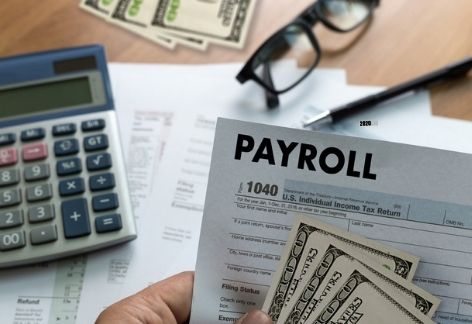The employee retention credit was created to incentivize businesses to retain employees throughout the pandemic, but what is this tax credit and what does it mean for your business?
When the coronavirus first began impacting the global economy, world leaders took steps to try and mitigate the damage the virus would do to businesses and workers. In the United States, the first of these relief efforts came in the form of the Coronavirus Aid, Relief, and Economic Security (CARES) Act of 2020.
Among other provisions, the CARES Act introduced COVID-19 related employee retention tax credits. Since then, two more laws have expanded and extended the deadlines for businesses qualifying and applying for the employee retention credit, while making amendments for who can qualify, and how.
What is the Employee Retention Credit?
The employee retention credit is a refundable tax credit for qualified businesses, equivalent to 50 percent of qualified wages (defined as up to $10,000 per employee annually, i.e. a tax credit of $5,000 per employee). Originally, this tax credit applied to all qualified wages paid from March 12, 2020, until December 31, 2020.
Under the original provision, an eligible employer was defined as any business owner running a non-government trade or business that either had to fully or partially suspend operation due to appropriate governmental orders, or any business that experienced a significant decline in a quarter’s gross receipts, as per the IRS’ definition (less than 50 percent of the gross receipts for the same calendar year of 2019).
The goal behind the employee retention credit was simple – to incentivize keeping employees on the company payroll despite taking heavy losses, either due to the virus’ impact on the economy, or due to direct intervention and limits implemented by local or federal government authorities to halt the spread of COVID-19.
Changes Made to the Employee Retention Credit
We are well into the second half of 2021 now, so it only stands to reason that the employee retention credit was extended. And so, it was – not only once, but twice, first with the Consolidated Appropriations Act, and again with the new American Rescue Plan Act, both of which were enacted in 2021.
The first significant change to be aware of is that the deadline has been extended to December 31, 2021, as of the American Rescue Plan Act. The credit remains available to all qualified employers who have had business significantly impacted by a government order, or who have not recovered to at least 80 percent of pre-COVID levels.
The second significant change is that the Consolidated Appropriations Act allowed businesses to claim up to 70 percent of qualified wages paid to employees, with a limit of $10,000 per employee per quarter, for the first two quarters of 2021 (maximum tax credit of $7,000 per employee per quarter). It also dropped the requirements for gross receipts to 20 percent less than what they were in the equivalent quarter of 2019 (or the quarter the business was started in, for new businesses), rather than 50 percent.
Then, the American Rescue Plan Act extended the previous amendment throughout all four quarters of 2021 and added a special provision for recovery startup businesses that launched after February 15, 2020, providing a tax credit of up to $50,000 per quarter if the business averaged less than $1 million in gross receipts and did not otherwise qualify for the employee retention credit.
The American Rescue Plan Act also allows businesses to qualify based on a 20 percent drop from the previous calendar quarter, rather than the corresponding quarter in 2019.
Announcements made by the IRS in early August clarified that the tax credit does not apply to qualified wages in connection with a shuttered venue grant under the Economic Aid to Hard-Hit Small Businesses, Non-Profits, and Venues Act, or a restaurant revitalization grant.
Furthermore, employers may exclude from their gross receipts any items pertaining to loan forgiveness for Paycheck Protection Program (PPP) loans, shuttered venue grants, or restaurant revitalization grants.
What Businesses Are Eligible for the Employee Retention Credit?
Any business forced to close due to a government order, or with gross receipts of less than half of the receipts of the same quarter in 2019, is eligible for the employee retention tax credit.
The latter is meant to help businesses that were not forced to close in response to the coronavirus due to their essential status (pharmacies, supermarkets, other critical goods, and material shops) or telework status (tech firms, businesses that operated remotely), yet still suffered massive losses.
Furthermore, as mentioned previously, a special employee retention credit is now also available to qualifying recovery startup businesses under the American Rescue Plan Act. These are startup businesses started on or after February 15, 2020, with less than $1 million annual gross receipts, who are not already eligible under previous requirements. This is a flat tax credit of $50,000 per quarter.
What Are Governmental Orders?
The IRS considers a business to qualify if trade is partially suspended by restrictions enacted by the appropriate government authority, limiting commerce, travel, or group meetings, to such a point that the business cannot operate at full capacity. For more information, visit the IRS’ page on how to determine whether operations can be considered partially suspended due to a governmental order.
What Wages and Compensation Qualify?
Qualified wages are defined as any wages and compensation paid between March 12, 2020, and December 31, 2021, including qualified health plan expenses, in times of economic hardship as described by a suspension in trade, or drastic decline in gross receipts.
Companies with over 100 full-time employees can only count wages paid to employees who are not providing services due to suspension of operations. Smaller companies can count all wages paid during economic hardship, as defined above.
How Do Businesses Apply for the Tax Credit?
Eligible employers must report all total qualified wages and health insurance costs per quarter on Form 941, the employment tax return.
Employers can also use Form 941-X to retroactively file for eligible quarters in which qualified wages were paid.
If a reduction in employment taxes is not enough to cover the full credit, an employer may use Form 7200 to request an advance payment from the IRS to cover the rest.
Employee Retention Credit and PPP Loans
Prior to changes made by subsequent acts, the original CARES Act did not allow employers who had claimed a PPP loan to claim the employee retention credit as well.
Since then, an amendment was made to allow employers to claim the tax credit and the loan, provided that qualified wages are not counted both for the employee retention credit and as payroll costs used to qualify for forgiveness of PPP loans.
If you qualified for both an employee retention credit and a PPP loan, and want to better understand their interaction, consult the IRS’s publication on the matter, and visit a tax professional to review the details of your own company’s situation.
If you are having payroll tax problems, consult our professional tax attorneys today.

